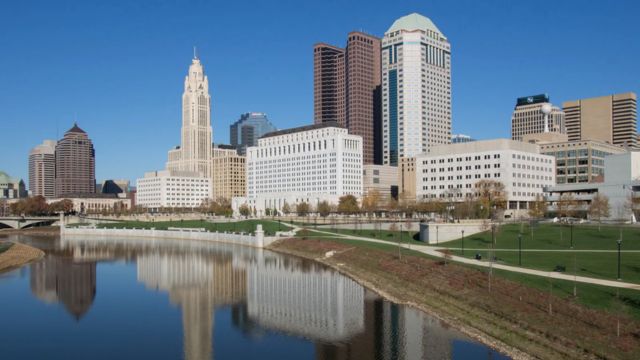Ohio offers numerous attractions, including picturesque state parks, dynamic cities, and delectable cuisine. Nevertheless, it grapples with safety concerns, with some areas ranking among the most perilous in the nation according to recent FBI crime data. One standout in this regard is Cleveland.
Cleveland: Addressing Safety Concerns
Nestled on the shores of Lake Erie, Cleveland, with its population of 381,009, is renowned for the Rock and Roll Hall of Fame, a tribute to music’s legends. Despite its cultural allure, the city has long struggled with crime and violence.
Based on 2021 FBI crime statistics, Cleveland recorded the highest murder rate in Ohio, at 35.5 murders per 100,000 residents. This surpassed other major cities like Cincinnati, Columbus, and Toledo. Alarmingly, Cleveland secured the 15th spot nationally for its murder rate, outpacing cities such as New Orleans, Philadelphia, and Atlanta.
Moreover, Cleveland reported the highest robbery rate and the second-highest aggravated assault rate in Ohio. Residents faced a 1 in 83 chance of being victims of violent crimes in 2021. Additionally, the city recorded the third-highest burglary rate and the fourth-highest larceny rate in the state, equating to a 1 in 22 chance of falling victim to property crimes.
Factors Behind Cleveland’s High Crime Rate
Several factors contribute to Cleveland’s elevated crime rates, including poverty, unemployment, drug issues, gang activities, and limited educational opportunities. In 2019, Cleveland’s poverty rate stood at 30.8%, more than double the national average, while the median household income was $29,628—less than half the national median.
Unemployment rates in Cleveland, particularly in 2020, exceeded both the state and national averages. This economic disparity may lead some individuals to turn to crime as a means of survival or an outlet for frustration.
Cleveland also grapples with a severe drug epidemic, particularly the opioid crisis. In 2019, the city reported the second-highest rate of drug overdose deaths in Ohio, exacerbating social issues and contributing to crime.
Gang activity further compounds Cleveland’s challenges. With approximately 80 active gangs and around 1,200 members, the city experiences frequent turf wars, resulting in shootings and homicides.
Addressing Cleveland’s Crime Challenges
While resolving Cleveland’s crime challenges is complex, several potential steps could enhance the situation:
- Increased Funding for Law Enforcement: Allocating more resources to the police and justice system can aid in apprehending criminals and providing support for victims.
- Community-Police Collaboration: Improving communication and collaboration between law enforcement and the community fosters trust, cooperation, and effective crime prevention and resolution.
- Expanded Drug Treatment Programs: Increasing access to drug treatment and prevention programs can assist addicts in recovery and deter new users.
- Enhanced Educational Opportunities: Providing more educational and vocational opportunities for youth and low-income residents helps in achieving personal goals, reducing crime incentives.
- Promoting Peaceful Culture: Encouraging a culture of peace and respect within the community can mitigate conflicts, reduce violence, and foster a sense of belonging.
In Conclusion
Cleveland, while possessing potential and charm, grapples with significant challenges, earning it the title of Ohio’s murder capital. The city’s high crime rate stems from a combination of socioeconomic factors. A concerted effort involving government, law enforcement, the community, and individuals is crucial for transforming Cleveland into a safer and more vibrant place to reside.

